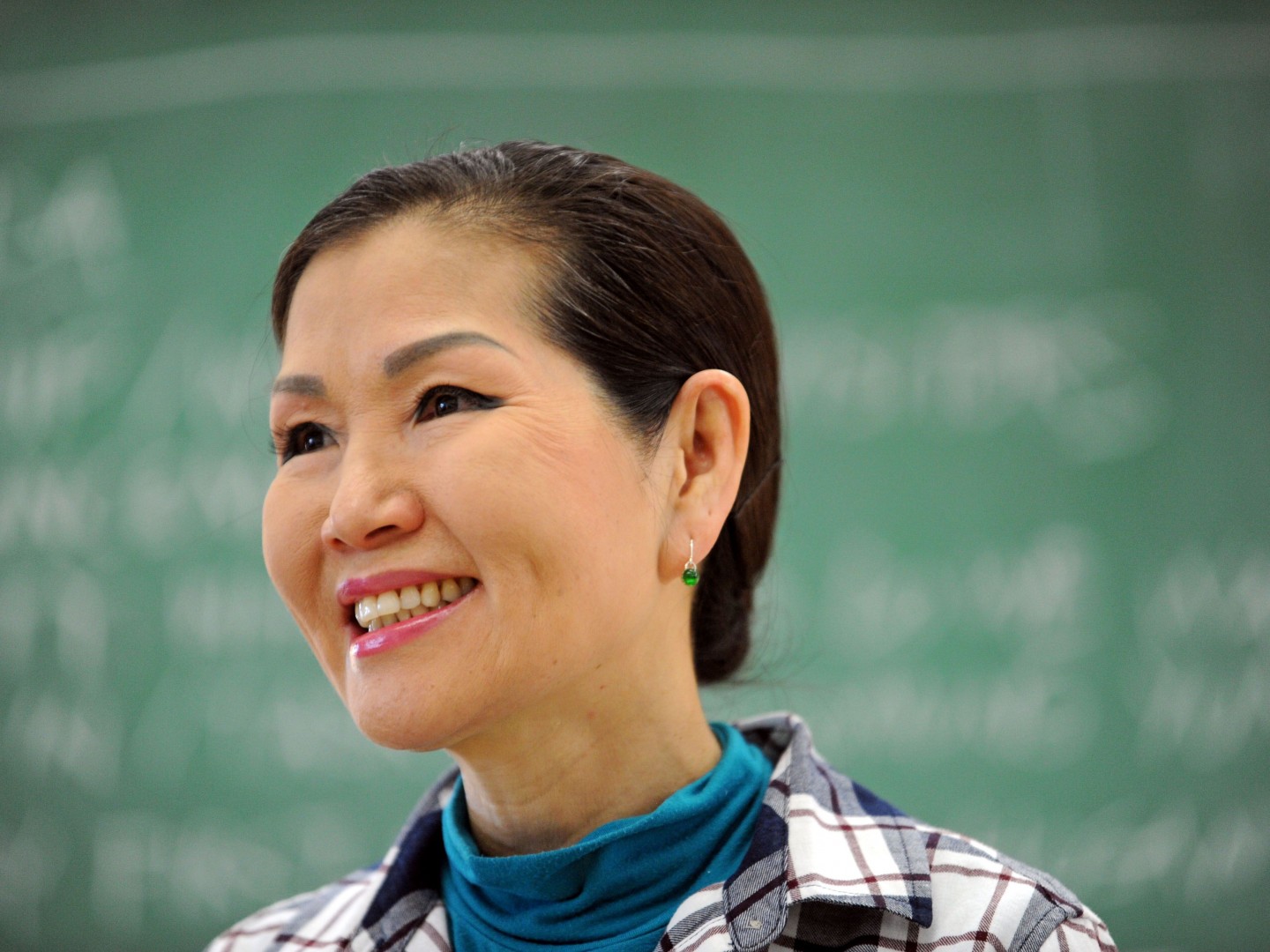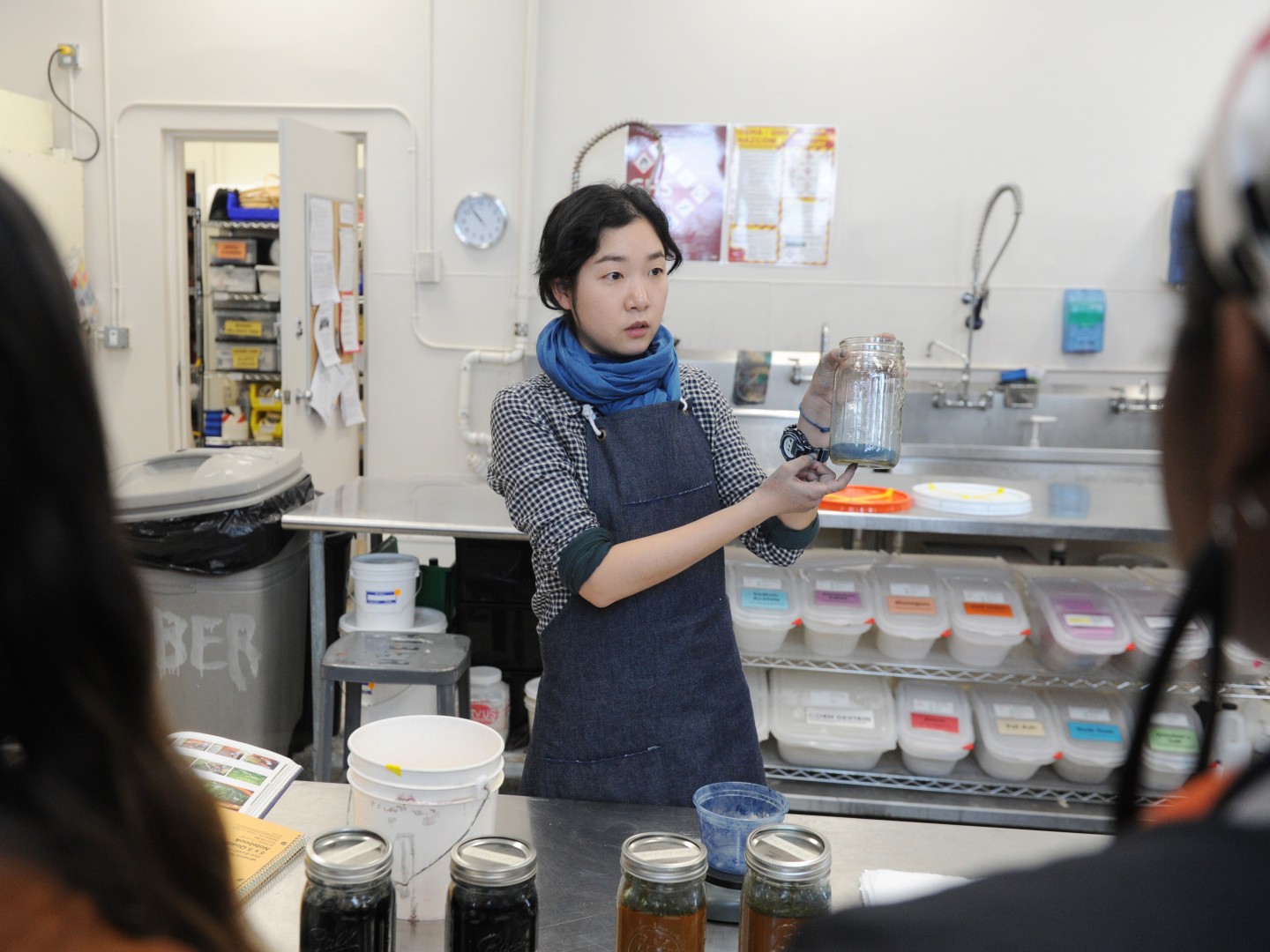Origins of the Natural Dye Initiative
In September of 2017, Maryland’s First Lady, MICA Alumni and faculty member Yumi Hogan visited the Natural Dyeing Culture Center in her hometown of Naju, South Jeolla Province, South Korea. The nature and cultural traditions of the region, including childhood memories of her mother and grandmother cultivating silk and making fabrics from colorful strands, deeply inspired Ms. Hogan to be a visual artist, focusing on abstract landscape paintings with Asian pigments.

In the spring of 2018, a delegation of natural dye experts from the Natural Dyeing Culture Center was invited to Maryland. During their visit, Ms. Hogan collaborated with the Fiber Department at MICA to organize and host an indigo dye workshop at the school. Following this workshop, Ms. Hogan, members of the Korean delegation and Rosa Chang ’11 (B.F.A Illustration), a natural indigo dyer and interpreter of the delegation for the workshop, had a conversation about the potential for an urban farming project with the community in Baltimore City. Naju and Baltimore share climate and environmental conditions and are a perfect environment for growing Polygonum Tinctorium (a.k.a Japanese Indigo). A few months later, funding was secured from the Department of Commerce, and the Department of Commerce approached MICA and the Fiber Department with the idea of partnering on this project.
The partners worked through the Fall of 2018 to more clearly define the goals of this project, expanding it to include other natural dyes. MICA faculty involved in the project developed a set of principles and protocols to guide the project work at MICA, enhancing their existing natural dye curriculum and establishing a relationship with Hidden Harvest, a community farm, as a site for a demonstration farm. In March 2019, Parks and People Foundation stepped forward to be the official site for the planting and cultivation of the natural dyes at the heart of this project.

